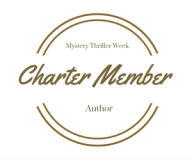#WATWB — Self Assembling PFAS Traps
In a world where the news gets worse every day, where words like quarantining and self-isolating have become part of our everyday jargon, and where environmental degradation seems to be the least of our worries, where the world sits, steeped in misery and despair and at the point of implosion, there’s finally something to raise our spirits an inch: PFAS traps.
First off, what the heck is PFAS?
Perfluoroalkyl and polyfluoroalkyl substances — collectively known as PFAS — are a group of man-made chemicals that include PFOA, PFOS, GenX, and many others. Manufacturing of PFAS began in the 1940s and soon this miracle product was being used in all kinds of products ranging from GorTex to teflon pans.
And PFAS had superpowers. They could repel both oil and water at the same time and were so versatile that manufacturers started putting these chemicals into everything: waterproof clothing, shoes, non-stick cookware, personal care products like hairspray and foundation, paints, carpet, fast food wrappers, cardboard packaging, electrical wire casings, surfactants, emulsifiers, and hundreds of other products. Eggs don’t stick when you cook with teflon and clean up is a breeze. And who wants to climb Mt. Everest wearing 20 pounds of wet wool when you can wick moisture away with GorTex? Even airports and army bases were using PFAS in their fire fighting foam.
What an amazing product, right?
Unfortunately, our greatest triumphs are often our Achilles heel.
The name PFAS describes the entire suite of chemicals with a fluorine and carbon bond so strong they have been dubbed “forever” chemicals. Further, the widespread use of PFAS has made them insanely persistent in the environment. There’s about 5,000 chemicals under this umbrella but the two most studied are PFOA and PFOS. While PFOS has been phased out of production, there are still plenty of replacements.
PFAS chemicals migrate through air, water, soil, food, even dust. They’re also used in packaging. Likely exposure routes are through food or water contaminated with PFAS, and through our skin via personal care products and clothing. For instance, if you scratch your teflon pan, the chemicals in the coating are released, so you get to have PFAS with your eggs.
The FDA found PFAS contamination in many foods sampled at the grocery store including seafood, and even chocolate cake. Currently there are no MCLs — maximum contaminant levels — for PFAS in drinking water, just a health advisory level of 70 ppt — that’s about 3 drops in an entire swimming pool. It’s not an enforceable regulation but it is driven by a risk assessment.
Health effects of PFAS include cancer, liver damage, developmental issues and more. A report by the CDC found PFAS in the blood serum of practically everyone in the U.S. The number was going down since removing certain PFAS from many consumer products — which is good news. And the industry is replacing the old chemicals with shorter carbon chain chemicals like GenX, but we don’t know a lot about these shorter chain chemicals. We do know more research is needed to understand the fate and transport and exposure routes and that’s going to take more time, but do we have it?
Regulating PFAS is a complicated issue, but that doesn’t mean that the water utilities haven’t figured some things out. PFAS are resistant to chemical treatment but they can be removed using granular activated carbon (GAC), reverse osmosis, and ion exchange resins.
And now, hopefully, with PFAS traps.
Scientists at the University of Buffalo have discovered self-assembling PFAS traps. By creating a tetrahedral cage made from iron and other organics that assemble like Legos, they are able to trap the PFAS to the outside of the chamber. The hope is to use these traps to pull PFAS out of drinking water which could ultimately improve water quality and drinking water standards.
And who wouldn’t be happy with a little purer water?
It’s the last Friday of the month. Time to share the good news on We Are the World Blogfest — #WATWB — a monthly good news trip around the world. May we all be energized and rejuvenated by the good news. If you’re interested in joining our Blog Hop, the guidelines are as follows:
1. Keep your post to below 500 words;
2. Link to a human news story on the last Friday of each month that demonstrates love, kindness, humanity, support, open-mindedness, you know, that kind of stuff, but no proselytizing, preaching or inconsiderateness toward others;
3. Post on the last Friday of the month in sharing the good news. No story is too big or small;
4. Place the WE ARE THE WORLD Badge on your sidebar and help spread the word on social media. Tweets, Facebook shares, G+ shares using the #WATWB hashtag through the month most welcome;
5. Read and comment on others’ posts, play nice, and make friends;
6. To sign up, add your link in WE ARE THE WORLD Linky List below.
Click here to enter your link and view this Linky Tools list. This month’s cohosts are:
Eric Lahti – https://ericlahti.wordpress.com
Susan Scott – http://www.gardenofedenblog.com/
Inderpreet Kaur Uppal – http://inderpreetuppal.com/
Shilpa Garg – https://shilpaagarg.com/
Peter Nena – https://drkillpatient01.wordpress.com/
Thanks for reading!
pam lazos 7.31.20













Pingback: Good News! – Stine Writing
Eek! I just watched the movie Dark Waters on how Dupont kept secrets about Teflon. It is an interesting movie if you haven’t watch it.
LikeLiked by 1 person
Yep, I watched it. You should also watch “The Devil We Know” on Netflix. A documentary also about PFAS and DuPont. 🤨
LikeLiked by 2 people
Ooo… Got it. I will go and catch it.
LikeLiked by 1 person
It’s quite eye-opening!
LikeLiked by 1 person
Is Dark Waters that movie with Mark Ruffalo? It’s so damn frightening when companies dismiss the concerns of waste being sent into the world. It’s hard to make money off of consumers when you, oh, KILL them. A touch dramatic, I know, but dammit, it’s true.
Anyhoo, I hope you’re well! Stay sane and safe, my friend xxxxxx
LikeLiked by 1 person
Yes, it is Mark Ruffalo. And not dramatic at all because over time, this stuff will kill us! You stay safe as well, friend. xox
LikeLiked by 1 person
Pam – I apologize … I tried to cut/paste and the article about toxic algae bloom and it pasted an article I sent to another blogger, an avid gardener, who received the mysterious seeds from China. This guy in the story got the seeds two months ago and planted them before hearing the news stories cautioning against doing so. The authorities have dug up the plant, which they think is invasive. Actually it is an interesting story too. The fellow blogger orders a lot of seeds as she has a huge garden and thought that’s where they got her name. Cutting and pasting an incorrect link has happened before … I don’t think it is user error, but perhaps a weary mouse at day’s end. 🙂 Here is the correct story about the toxic algae bloom: https://wwjnewsradio.radio.com/articles/news/health-officials-warn-of-potentially-toxic-scum-in-mich-lake?utm_campaign=https://wwjnewsradio.radio.com/&utm_content=1596748146&utm_medium=social&utm_source=facebook&utm_term=WWJ-AM&fbclid=IwAR0YQSxlhJZqmoeRXAW71noCtDOK3GoLn5aB7AoO8tSWH_jN4jUoKYgv5tw
LikeLiked by 1 person
Ugh! This is even worse than the last one! Where’s it coming from or is the toxicity natural?
LikeLike
Some is natural and caused by stagnant water if there is no rain or even a breeze to stir the water and extreme heat. Some is a result of runoff pollution. It gets so thick the algae bloom uses up oxygen and the aquatic plants and fish, crayfish, turtles die from lack of oxygen. That is similar to what happens when we get a thick covering of ice at this Creek – no oxygen and the fish die. When it thaws, the fish, usually shad, rise to the surface and their bodies drift toward the shore and pile up there. Ugh.
LikeLiked by 1 person
This is the same thing that’s happening in the Chesapeake Bay, Linda.
LikeLike
That’s a shame Pam. Shore birds and birds of prey will suffer as they eat the contaminated fish – the birds need to drink water. Hope they don’t go there too, but I mentioned to you a few months ago that I can remember homeowners along the shoreline of a contaminated body of water, came out of their homes to find many dead mallards washed up along the shoreline … all had ingested the toxic algae bloom
LikeLiked by 1 person
So sad, Linda.
LikeLike
Yes it is Pam.
LikeLiked by 1 person
Hi Pam – I saw this article on my all-news radio station about toxic algae bloom that we discussed a few weeks ago, so I wanted to send it to you. This is not in my county – it’s about 25 miles away.
https://wwjnewsradio.radio.com/articles/radiocom/man-plants-mystery-seeds-from-china?utm_campaign=https%3A%2F%2Fwwjnewsradio.radio.com%2F&utm_content=1596730801&utm_medium=social&utm_source=facebook&utm_term=WWJ-AM&fbclid=IwAR1tGTEjBfGOkUULIoshCXKe_iFya1z0mVm3ih5p84i42xgPv9VLcLJWx00
LikeLiked by 2 people
Exactly what throws the environment out of balance, Linda. All these invasive species!
LikeLiked by 1 person
Yes – sorry I sent you this by accident Pam, but it was interesting. Another blogger got those seeds from China. Well, the local authorities ripped this invasive species out of the ground and took it away to analyze it. Apparently this farmer never heard the news story suggesting planting was a no-no.
LikeLiked by 1 person
🙏
LikeLiked by 1 person
Thanks for the good news about the filter, Pam. It sounds amazingly simple. I wonder if this technology is being put to use in other places too… I suppose it’s up to us to start asking questions.
LikeLiked by 2 people
It’s emerging technology, Cath so I’m sure there’s work to be done.
LikeLiked by 1 person
We don’t seem to get things right the first time, do we? Sigh. Interesting post.
LikeLiked by 2 people
No we don’t, Jacqui. ;0)
LikeLiked by 1 person
I don’t think we want to know how many forever chemicals are floating around inside our bodies. It would probably blow our minds. Thank goodness they are coming up with traps to filter our water.
LikeLiked by 2 people
OMG, you’re probably right, Michele. 😷🧐
LikeLiked by 1 person
I wonder if they know about PFAS traps here in Michigan Pam … especially along the 130-mile Huron River where there are signs everywhere not to eat the fish? Good they are doing something to negate a product that was formerly revered … if only there was a fix for everything that is wreaking havoc in the rest of the world.
LikeLiked by 2 people
Maybe someday, Linda. 🤓
LikeLiked by 1 person
I did not know about this. Thank you for sharing.
LikeLiked by 2 people
👍🥰
LikeLike
I’d never heard of PFAs until your post, Pam; thanks for sharing. Would you agree it’s a case of science taketh away and giveth back? It’s great that scientists created traps that can help.
LikeLiked by 2 people
Yes, I guess you could characterize it that way since we have so many great products because of PFAS. I do wish that our manufacturing processes were cradle to grave though, and focused more on public health and less on profit. Thanks for stopping by, Lizbeth. 🙏
LikeLike
Humans have never been perfect – errors in judgement based on so many factors. At the same time, they learn and adapt. Sharing blogs, such as this, is a way to get information out there for people to read, learn, and make changes as needed. Thanks for posting and for being a part of #WATWB
LikeLiked by 2 people
Thank you. My pleasure.
LikeLiked by 1 person
Interesting. I didn’t know about this, but now that I do I like that something positive is being done about it. Gotta love science if’n you want to live healthy.
LikeLiked by 2 people
Yes you do, Ally. 👏
LikeLiked by 1 person
There’s a former military facility a few miles from my house. Military planes used it for years. It is now privately owned, but redevelopment is on hold because of the damage that PFAs did to the neighboring areas’ ground waters. (PFAs were used on the runways at the facility)
LikeLiked by 3 people
Yes, exactly, Neil, and water, as we know, doesn’t stay out so that contamination is making its way to the farthest corners of the planet as we write and read about it. A sad state.
LikeLiked by 2 people
Thanks Pam, who would’ve known that our lives are so (further) endangered. Good that those traps can be self-assembled, the sooner they can be used the better. Important to get this news out to the world, thank you, great post. Have a lovely weekend 🙂
LikeLiked by 3 people
Oh the million ways to Sunday that we are endangered, Susan. Best we don’t know about them all or we won’t want to get up in the morning!🤪🥰
LikeLiked by 2 people
Hi Pam – thank you for this … I’d noted about this range of chemicals and their apparent usefulness … and worry about the waste plastic that’s around … on the ground, in the air, in water (the rivers and oceans). So these PFAS traps are so good to know about … science is being so essential to us now-a-days … an excellent #WATWB news story … take care – Hilary
LikeLiked by 3 people
Hopefully, we’ll be able to science 🧪 our way out of themes we’re in, right, Hilary?!🤓
LikeLiked by 2 people
I think I’m losing my mind on what we can or can’t do … but I’m alive and active … let the government change the rules and advice every five minutes … I don’t mind – I’m too old to mind!! The (the Govt) changed the rules at about 9.00 pm last night for today – presumably midnight last night … stupid – may be necessary … but such a mix up. Still I’d rather be here … take care – Hilary
LikeLiked by 2 people
Haha, yes, me, too, Hilary!🤣😂😷
LikeLiked by 2 people